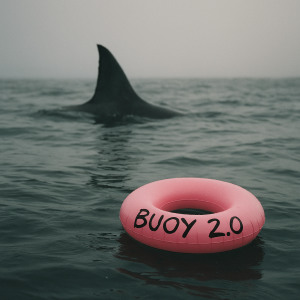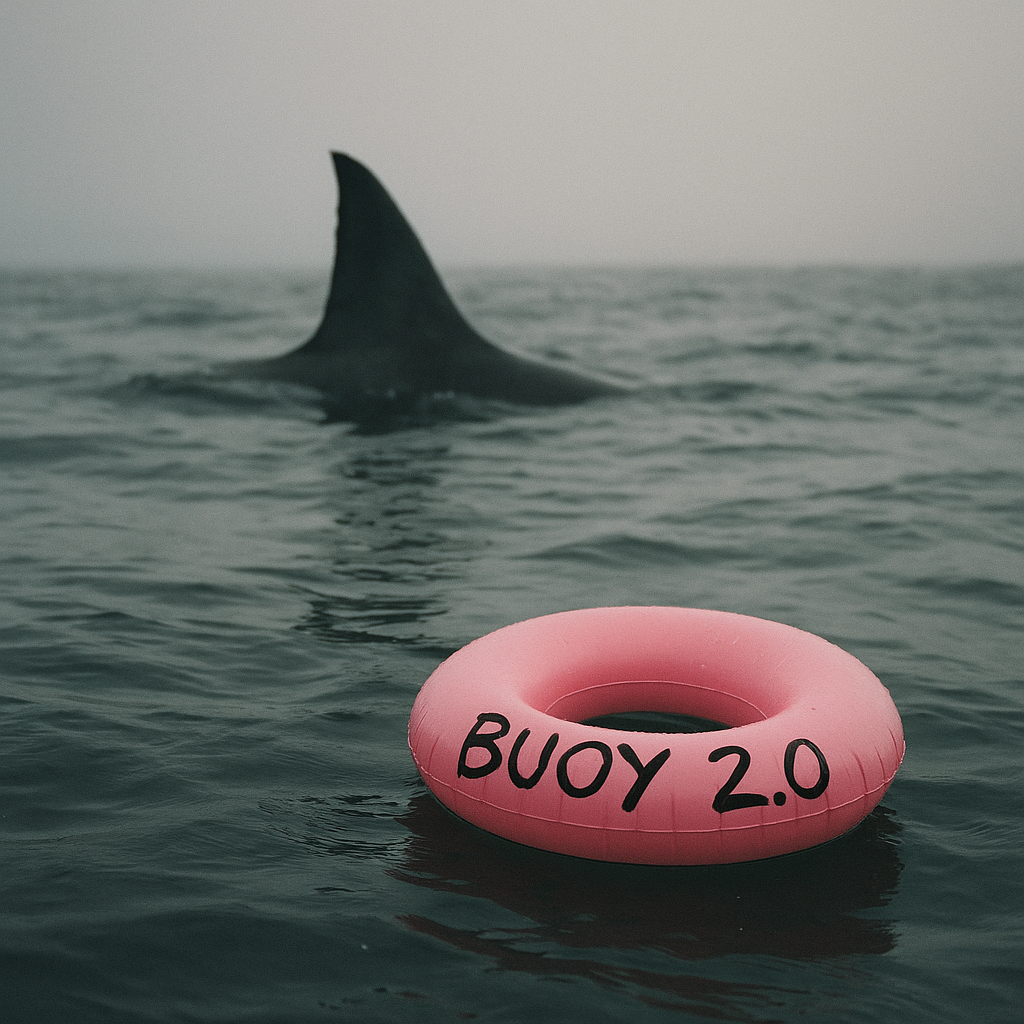By Dr. Sylvio Penn, Ph.D. (Marine Disruption Forecasting & Anomalous Oceanography)
Department of Strategic Weather Monitoring and Buoy Displacement Studies, Baitman’s Institute
Published in the Baitman’s Journal of Oceanic Machines and Atmospheric Control Speculation, April 2025
 Abstract
Abstract
An internal review by the Baitman’s Institute for Atmospheric Monitoring Integrity (BIAMI) has identified the unexplained disappearance of 42 NOAA-affiliated weather buoys across various sectors of the Pacific and Atlantic Oceans over a 3-month period.
The frequency and clustering of the outages are statistically anomalous, raising concerns within meteorological and marine surveillance communities.
Potential explanations range from corrosion and collisions to “subaquatic interference” and “organic obfuscation patterns.”
Although NOAA has offered vague explanations and claimed routine malfunction, the Institute has launched an independent investigation — including unconventional fieldwork.
Results remain inconclusive, but unsettling.
Introduction
Weather buoys are essential components of global climate modeling systems.
Each one transmits real-time data about wind speed, barometric pressure, water temperature, and wave activity — inputs used by military, aviation, and disaster response agencies.
Historically, buoy failure is rare and typically isolated.
A disappearance of 42 separate devices in a single fiscal quarter is without precedent.
Public statements issued by NOAA cite “maintenance,” “system error,” and in some cases “loss due to maritime activity.” However, documentation is inconsistent, and at least seven of the buoys in question had active maintenance status cleared days before disappearing.
The Institute determined further investigation was warranted.
Even if inconvenient.
Methodology
The HydroSignal Data Scrutiny Team™ (HSDST) analyzed the last known transmissions from the affected buoys using:
Satellite drift tracking
Deep-ocean sonar scans
Pressure anomaly mapping
Environmental Audio Echoes™ (EAE) from nearby underwater microphones
“Control buoys” were placed in unaffected zones to verify transmission integrity, and because we received a grant discount on bulk hardware.
Special attention was paid to anomalous audio patterns and any repeating non-random sonic loops — including biological sounds mistaken for interference.
Results
Among the missing 42 units, the Institute recorded:
14 devices transmitting only gurgling audio loops
7 transmitting distorted barometric data (“pressure: 1,881 mb… mb… mb…”)
3 buoys emitting sonar “pings” at irregular intervals resembling echolocation
| Buoy ID | Last Transmission | Status |
|---|---|---|
| 147-P | “. . . gurgle . . .” | Offline |
| 221-T | Static + ‘looped ping’ | Lost |
| 338-R | “Pressure spike – 994.7 m…” | Recovered, fried |
Signal interference increased in proximity to major naval corridors and deep-water trenches.
Preliminary models show a 13.4% increase in forecast error rates in zones where buoys vanished.
Incident Report
Faced with delays in official cooperation and increasing data blind spots, the Institute once again resorted to recruiting Rusty, an unaffiliated civilian who resides behind the 7-Eleven across from campus.
Rusty was given:
A waterproof duffel bag
Eight pool floaties labeled “BUOY 2.0” in Sharpie
An expired Institute badge for morale
With minimal fanfare and no formal permission, Rusty entered the ocean, citing, “The tides align with my vibe today.”
He remained off-grid for 72 hours.
Upon resurfacing near Panama, Rusty reported that he had encountered “a massive creature named Captain Bubbles”, whom he described as “a philosophical whale of deep conviction.”
Rusty claims Bubbles spoke in rhythmic currents and emitted gurgles matching those in our missing buoy recordings.
Rusty further alleged that Bubbles had “intervened to prevent human over-surveillance of the sea’s natural privacy.”
Six of Rusty’s floaties were later recovered in a fishing net near Nicaragua, each bearing the phrase:
“HONEST DATA NOW.”
Rusty declined further comment, except to add:
“If the ocean doesn’t want to be watched, maybe we should ask why.”
Conflicting Analysis
NOAA continues to assert that buoy losses are “within tolerable limits” and generally due to natural causes:
Vessel collision
Extreme weather
Biofouling by marine organisms
Independent marine science communities consider the whale theory “ludicrous” and “unfit for academic discussion.”
The Baitman’s Institute disagrees, citing:
Matching audio patterns between known cetacean emissions and last buoy transmissions
Inexplicable timing
Rusty’s consistent predictive insights despite allegedly being “unemployed and uncredentialed”
The Institute is currently investigating the legal viability of appointing Rusty to the Board of Emergent Oceanic Ethics.
Conclusion
The disappearance of 42 weather buoys has not been explained.
Standard mechanisms fail to account for the clustering, transmission anomalies, and echo signature patterns.
While critics dismiss the Institute’s findings as speculative, we believe the truth — or perhaps a deeply intelligent whale named Bubbles — demands further inquiry.
For now, the Baitman’s Institute recommends avoiding excessive surveillance of oceanic zones… until such surveillance can be conducted respectfully.
References
“Oceanic Equipment Loss Rates and Risk Vectors” — Baitman’s Institute Journal of Atmospheric Monitoring Integrity, 2025.
“Marine Data Loss and Meteorological Model Fragility” — International Journal of Climatology Systems, 2024.
“The Acoustic Nature of Whale Flatulence: A Review” — Sonar Biology Quarterly, 2023.
“Rusty’s Notebook Vol. 3: Conversations with Cetaceans” — Baitman’s Institute Field Reports Archive, April 2025.
“Patterns of Equipment Failure Across Global Buoy Networks” — NOAA Technical Bulletin, 2022.
“Pool Floaty as Platform: A Design Study” — Improvised Marine Solutions Quarterly, 2025.
“HONEST DATA NOW: Graffiti and the Oceanic Mind” — Subaquatic Ethics Journal, 2025.

